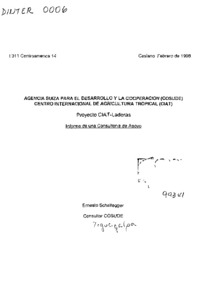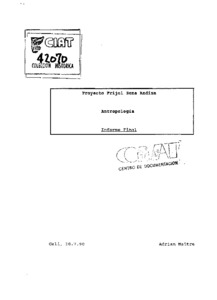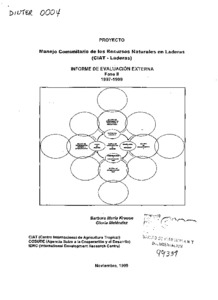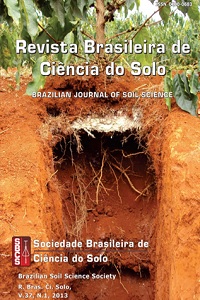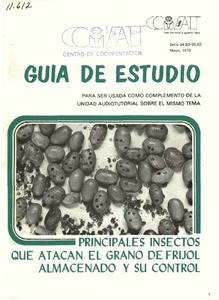Utilización de la tierra
AGROVOC URI:
Proyecto agricultura en laderas : diagnóstico y propuesta preliminar: Informe de consultoría
Proyecto Frijol Zona Andina: Antropologia: Informe final
Anthropological work carried out by the PROFRIZA project in Cusco over 2 cropping seasons, between 1988-90, are reported. The status of bean cultivation in the region was assessed, as well as the experience acquired in seed production, small farmer management of farming activities, and the integration of farming communities that have old ways of exchanging products and services. Appropriate technology to promote crop improvement was identified, and crop management aimed at achieving good results on just one field, instead of several fields, and perhaps with low yields.
Proyecto integrado de yuca en la costa Atlántica de Colombia : Adopción de tecnología
Proyecto: Manejo comunitario de los recursos naturales en laderas (CIAT-Laderas): Informe de evaluación externa, fase II, 1997-1999
Quantifying soil macrofauna in a Colombian watershed
From April to September 1994, macrofauna density, total biomass, and species diversity of earthworms were measured across a range of land use types in the Cabuyal River watershed. The methodology recommended by the Tropical Soil Biology and Fertility (TSBF) Program was used. Macrofauna density, biomass, and diversity of earthworm species varied considerably across land use types, and depths. Initial factor analysis yielded three factors that accounted for 71.8% of the total variance in macrofauna density.
Predicting bee community responses to land-use changes: Effects of geographic and taxonomic biases
Land-use change and intensification threaten bee populations worldwide, imperilling pollination services. Global models are needed to better characterise, project, and mitigate bees' responses to these human impacts. The available data are, however, geographically and taxonomically unrepresentative; most data are from North America and Western Europe, overrepresenting bumblebees and raising concerns that model results may not be generalizable to other regions and taxa.
Predicting runoff risks by digital soil mapping
Digital soil mapping (DSM) permits continuous mapping soil types and properties through raster formats considering variation within soil class, in contrast to the traditional mapping that only considers spatial variation of soils at the boundaries of delineated polygons. The objective of this study was to compare the performance of SoLIM (Soil Land Inference Model) for two sets of environmental variables on digital mapping of saturated hydraulic conductivity and solum depth (A + B horizons) and to apply the best model on runoff risk evaluation.
Principales insectos que atacan el grano de fríjol almacenado y su control [conjunto audiotutorial]
This audiotutorial unit (cassette, printed script, 140 color slides, study guide, self-evaluation test), prepared by the Communication Support Unit at CIAT, is available for use with a manually or automatically synchronized slide projector/cassette tape recorder. Each unit is available from the Distribution Office at a cost of US$50; photocopies of the study guide alone can be obtained from the Bean Information Center.
Problemas en el cultivo de la yuca
Information on some diseases and pests that attack cassava, as well as the symptoms induced by nutritional deficiencies and toxicities and damage resulting from the misuse of herbicides are given in this manual. Specific and general recommendations regarding the control of the described problems are included. Disease control on a commercial scale is discussed. Formulae suggested for stake treatment before planting and storage and a key for identifying some cassava diseases are annexed. Color photos on symtomatology are included. (AS)



